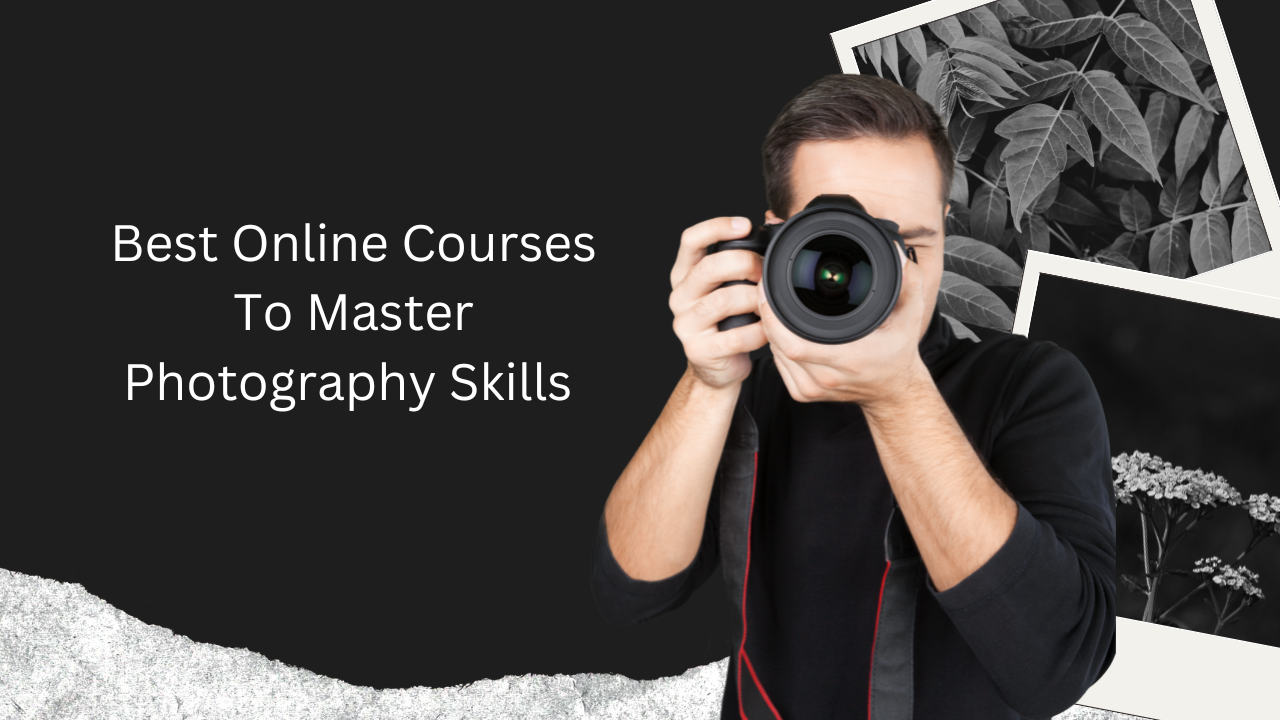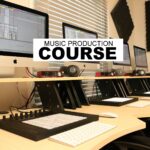From Blurry Snaps to Breathtaking Shots: My Journey Through a Photography Course
Remember that feeling? The one where you snap a picture, full of hope, only to look at it later and think, "Ugh, not again." Your phone camera tries its best, but sometimes, what you see in your mind just doesn’t translate to the photo. That was me, for years. My pictures were… fine. Sometimes. But mostly, they were blurry, too dark, or just didn’t capture the magic of the moment. If this sounds like you, then pull up a chair, because I’m about to tell you how a simple photography course changed everything for me.
The "Before": My Photography Woes and the Dream of Better Pictures
I’ve always loved taking pictures. Family holidays, a beautiful sunset, my pet doing something silly – I wanted to freeze those moments. I even bought a fancy-looking camera, a DSLR, thinking it would magically make my photos look professional. Boy, was I wrong! That camera felt like a complicated toy with too many buttons. I’d mostly leave it on "Auto" mode, and even then, my photos often looked flat, lifeless, or just… amateurish.
I’d scroll through Instagram, admiring stunning landscapes, gorgeous portraits, and vibrant street photography, and wonder, "How do they do that?" My pictures just didn’t have that "pop." I felt frustrated, like there was a secret language of photography I just couldn’t crack. I wanted to learn, truly learn, how to take better photos, but where do you even start? The internet was a huge, overwhelming place, full of jargon and conflicting advice.
The Leap of Faith: Signing Up for a Beginner Photography Course
One day, after deleting yet another batch of disappointing holiday photos, a little voice inside me whispered, "Maybe it’s not the camera, maybe it’s you… and that’s okay, because you can learn!" That’s when I decided to actively search for a beginner photography course.
I looked for something that promised to take me from zero to understanding, without making me feel stupid. I didn’t want a dry, technical lecture; I wanted someone to explain things simply, like they were talking to a friend. After a bit of searching – some online, some in-person workshops – I found one that felt just right. It promised to teach me how to use my camera, understand light, and compose beautiful shots. I took a deep breath, signed up, and honestly, it was one of the best decisions I’ve ever made.
What I Actually Learned: The "Aha!" Moments That Changed Everything
The course started with the absolute basics, which was exactly what I needed. It felt like someone was finally handing me the keys to a secret kingdom. Here are some of the biggest "aha!" moments I had:
1. Finally Understanding My Camera (Hello, Manual Mode!)
This was huge. For so long, my camera’s settings felt like a foreign language. The course broke it down. We talked about:
- Aperture: This controls how much of your photo is in focus. Want that blurry background for a portrait? Aperture is your friend. It’s like your eye’s pupil – wider for more light and a shallow focus, narrower for less light and everything sharp.
- Shutter Speed: This is how long your camera’s shutter stays open. Want to freeze a fast-moving object? Use a super-fast shutter speed. Want to show movement, like silky water in a waterfall? A slower shutter speed is key.
- ISO: This is about your camera’s sensitivity to light. Need to take a photo in a dimly lit room without flash? Bump up the ISO. But be careful, too high and your photo can look grainy!
Learning how these three, often called the "exposure triangle," work together was like getting glasses for the first time. Suddenly, I wasn’t just taking pictures; I was making them. This part of the digital photography course alone was worth the investment.
2. Beyond Point-and-Shoot: The Magic of Composition
Before the course, my photos were often just "point the camera and shoot." After, I started to see the world differently. We learned about:
- The Rule of Thirds: Imagine a tic-tac-toe board over your photo. Placing your subject at one of the intersections or along the lines makes a picture much more visually appealing. It sounds simple, but it makes a massive difference!
- Leading Lines: Roads, fences, rivers – these can "lead" the viewer’s eye through your photo, creating depth and interest.
- Framing: Using natural elements like doorways, tree branches, or windows to create a "frame" around your subject.
These composition tips weren’t just rules; they were tools to tell a better story with my photos. My camera started feeling like an extension of my eye, not just a box that captured light.
3. Light, Light, Light! Understanding Your Best Friend (and Worst Enemy)
This was probably the most impactful lesson. I used to think light was just… there. The course taught me that light is everything in photography. We learned about:
- Golden Hour: Those magical times just after sunrise and before sunset, when the light is soft, warm, and beautiful. My portraits instantly looked better!
- Harsh Midday Sun: How to avoid unflattering shadows and blown-out highlights. Sometimes, it’s better to find shade or wait for different light.
- Direction of Light: How light coming from the side creates texture, while light from behind can create stunning silhouettes.
It wasn’t just about having light; it was about using it. This knowledge transformed my outdoor photography.
4. The Magic of Post-Processing (Photo Editing Made Easy)
Another revelation! I used to think editing was "cheating" or something only pros did with expensive software. The online photography course (or whichever format you choose) introduced me to user-friendly editing apps and software. We learned how to:
- Adjust Exposure: Brighten dark spots, tame overly bright areas.
- Tweak Colors: Make greens greener, skies bluer, or give a photo a warm, nostalgic feel.
- Crop and Straighten: Simple adjustments that instantly improve a photo’s impact.
It wasn’t about faking reality; it was about refining it, bringing out the best in an already good photo. It’s like polishing a gem – the gem is already beautiful, but a little polish makes it sparkle!
The Transformation: Life After the Photography Course
After completing the photography workshop, my entire relationship with my camera changed. It wasn’t intimidating anymore; it was exciting. I felt a quiet confidence bloom. I started seeing photographic opportunities everywhere – the way the morning light hit my coffee cup, the intricate patterns on a leaf, the playful expression of a stranger’s dog.
My photos genuinely improved. Friends and family started commenting, "Wow, your pictures look amazing now!" They even started asking me for tips. I began sharing my photos more confidently, and for the first time, I felt like I was truly expressing myself through my photography.
It wasn’t just about technical skills; it was about learning to see. The course didn’t just teach me how to operate a camera; it taught me how to observe the world around me with a more artistic eye. It ignited a passion I didn’t fully realize I had.
Is a Photography Course Right for You? My Honest Advice
If you’ve read this far and found yourself nodding along, then yes, a photography course is absolutely worth considering. Here’s why and what to look for:
- For Beginners: If you’re struggling with your camera, don’t understand terms like "aperture" or "shutter speed," or just want to take more appealing photos, a beginner course is perfect. It provides a structured learning path that the internet often lacks.
- Structured Learning: Instead of piecing together random YouTube videos, a good course gives you a clear progression, building your skills step-by-step.
- Feedback and Community: Many courses offer feedback on your work, which is invaluable. You also get to connect with other aspiring photographers, share experiences, and learn from each other.
- Confidence Boost: There’s nothing like understanding something you once found confusing. It empowers you to experiment and grow.
What to look for in a course:
- Clear Curriculum: Make sure it covers the basics: camera settings (manual mode!), composition, light, and maybe some basic editing.
- Teacher’s Style: Look for reviews. Do people say the instructor explains things simply and makes learning fun?
- Format: Do you prefer an online photography course you can do at your own pace from home, or an in-person photography workshop where you get hands-on experience and direct interaction? Both have their perks!
- Reviews and Testimonials: See what past students say about their experience.
Don’t Just Take Pictures, Make Pictures!
My journey from frustrated beginner to confident photographer wasn’t instant, but it was incredibly rewarding. Taking that photography course was the spark that lit my passion. It wasn’t about becoming a professional overnight; it was about truly enjoying the process, capturing memories beautifully, and finding a new way to express myself.
So, if you’re standing at the crossroads, wondering how to turn your "okay" photos into "wow" photos, take the leap. Invest in yourself, invest in your creativity. You might just discover a whole new world through your lens. Happy snapping!



